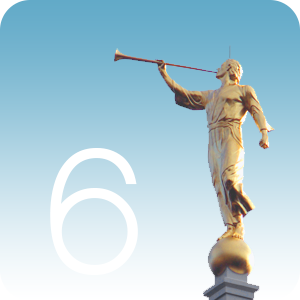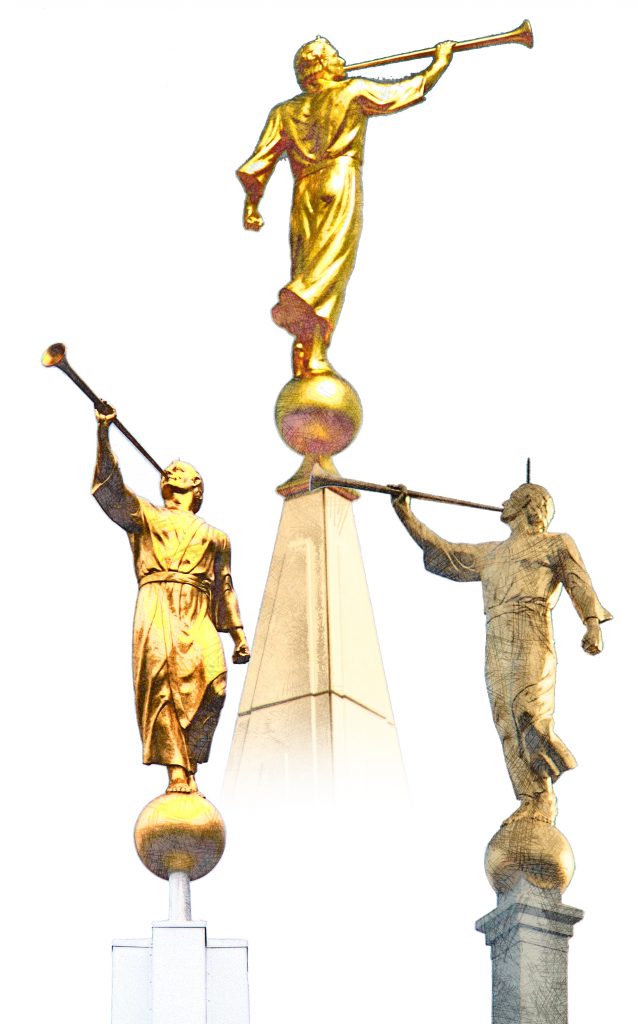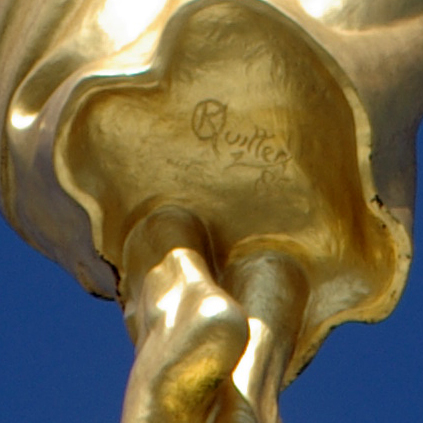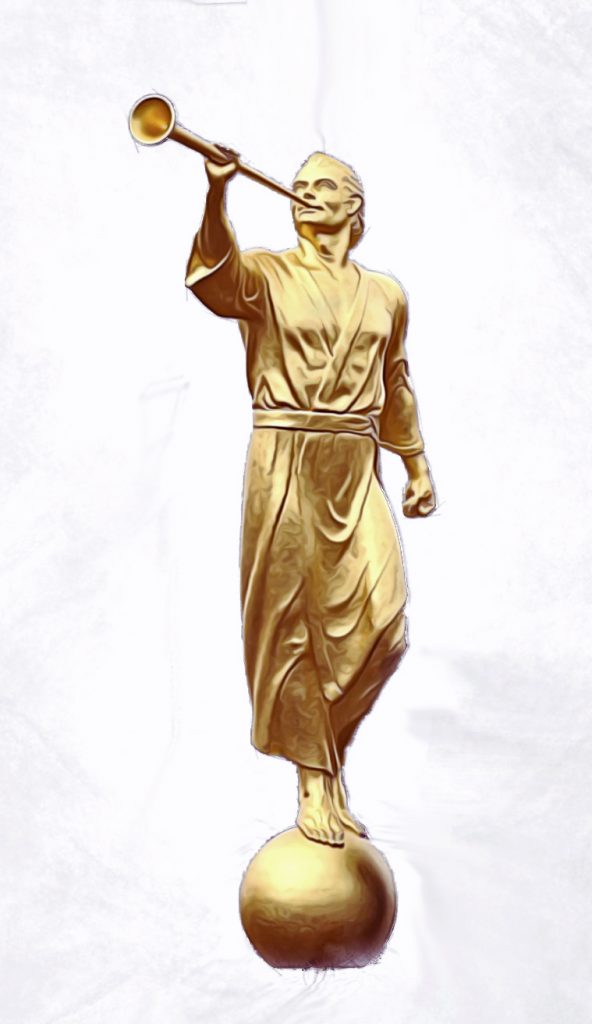Quilter’s Second

| COMMISSIONED | 1978, sculpted ~1985 |
| MATERIAL | Fiberglass |
| HEIGHT | 10’ (3.2 Meters) |
| WEIGHT | ~400 lbs. (136.1 kilograms) |
| CURRENTLY ON | 46 Temples |

Kansas City Missouri Temple (2010) , Bern Switzerland Temple (2005) and Mount Timpanogos Temple Moroni Statues
A Taller Standard
The Need
Temples vary in height. As such, a shorter statue that looks good on one temple might look too small or too tall on another. Karl Quilter was asked to create a second statue, taller, to be used where it would look more balanced on some of the new taller temples. Quilter’s second statue is 10.5 feet, giving architects an alternative statue size to choose from when they design a temple. With almost 50 of this new statue in use in use it is the second most plentiful Moroni Statue.
Design
When viewed from the front, the hem of the robe hangs straight down from the waist, not being blown to either side. The left arm is closer to the body. The wrist on the left arm has no bend to it. The left hand is clenched in a fist in this statue, like the first. The left leg bends forward at the knee like the previous statue. However it also bends slightly to the outside. This causes the left ankle to be behind the right foot.
When viewed from the side, there is no bend in the left elbow. The cuff is tightly windswept and blown out behind the arm.
The fingers on the right hand touch together. The thumb touches the side of the pointer finger without overlapping it.
This statue is signed on the underside “K Quilter 85” and “J. Dell Morris” J. Dell Morris competed against Karl Quilter for the chance to design the statue atop the Washington D. C. Temple. Both of them, of course, lost to Dr. Avard Fairbanks.[1]“Angel Moroni Statue Chosen For Temple,” Deseret News, 10 July 1971.

Placement
This statue was initially planned for a run of six on larger temples being planned at that time, San Diego, California; Orlando, Florida; St. Louis, Missouri; Guayaquil, Ecuador; Bogota, Columbia; and Bountiful, Utah.[2]Roe, Frederick Robert 1920-. Angels: Moroni and his associates / Fred Roe [Bountiful, Utah]: The Author, 1992 May 1992 printing, (accessed: August 12, 2019)
[gphotos type=”rectangular” ids=”9349″]However on 27 January 1987, the Las Vegas Nevada Temple became the first temple to receive a copy of this statue placed on its center east spire. Since then this statue has been used on 45 temples as of the end of 2018
Identification Guide

The Tight Grip
The right trumpet hand on this version of the Angel Moroni has fingers that are close together, touching each other. The thumb touches the pointer finger, leaving no gap between thumb and trumpet.

The Wrinkled Sleeve
The left sleeve on this statue has wrinkles, very defined wrinkles. The quickest way to tell it apart from the previous statue is to look just above the inside of the elbow for the well-defined creases.

The Defined Hem
The hems of the sleeves on the cuffs of this Angel are visibly hemmed.

The Windswept Cuff
Besides the distinctive clothing, this is currently the only Moroni on temples that is not barefoot.

Chapter 3 Navigation
Related Articles
References
| ↑1 | “Angel Moroni Statue Chosen For Temple,” Deseret News, 10 July 1971. |
|---|---|
| ↑2 | Roe, Frederick Robert 1920-. Angels: Moroni and his associates / Fred Roe [Bountiful, Utah]: The Author, 1992 May 1992 printing, (accessed: August 12, 2019) |
